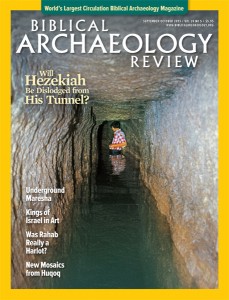Happy Birthday, Israel Exploration Society.
And not just any birthday. One hundred years ago, in 1913, a small group of non-archaeological Jewish intellectuals in Ottoman Palestine founded the organization that would eventually become the central Israeli archaeology organization. It was originally called the Jewish Palestine Exploration Society. When World War I erupted a short time later, the Society essentially became inactive, only to re-emerge with a slightly new name—the Hebrew Palestine Exploration Society—in 1920 after the League of Nations granted Great Britain control of the Holy Land pursuant to the British Mandate. One of the Society’s most active members was Eliezer Ben-Yehuda, whose Hebrew dictionary is widely credited with reviving Hebrew as a modern language.

In the 1920s there was still no academically trained archaeologist among the Society’s members. Enough money was raised, however, to send one of its most active members, Eliezer Lipa Sukenik, who would become the father of famed Israeli archaeologist Yigael Yadin, to study archaeology in Berlin. Thereafter he went to study in the United States where he received his Ph.D. In 1929 Sukenik excavated what was then an astounding discovery—a sixth-century C.E. synagogue with a mosaic floor featuring a zodiac with the Greek god Helios in the center and, in another panel, the binding of Isaac as told in Genesis 22.
Already a library member? Log in here.
Institution user? Log in with your IP address.

